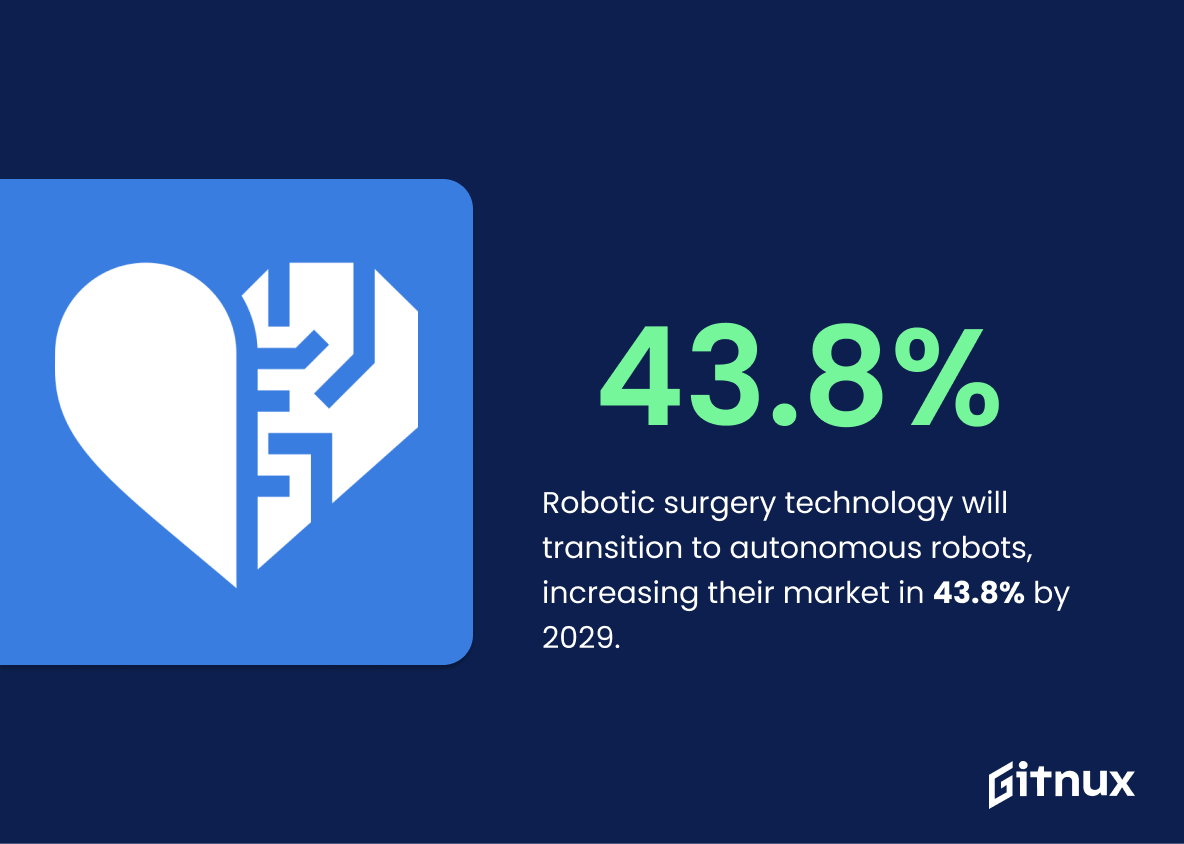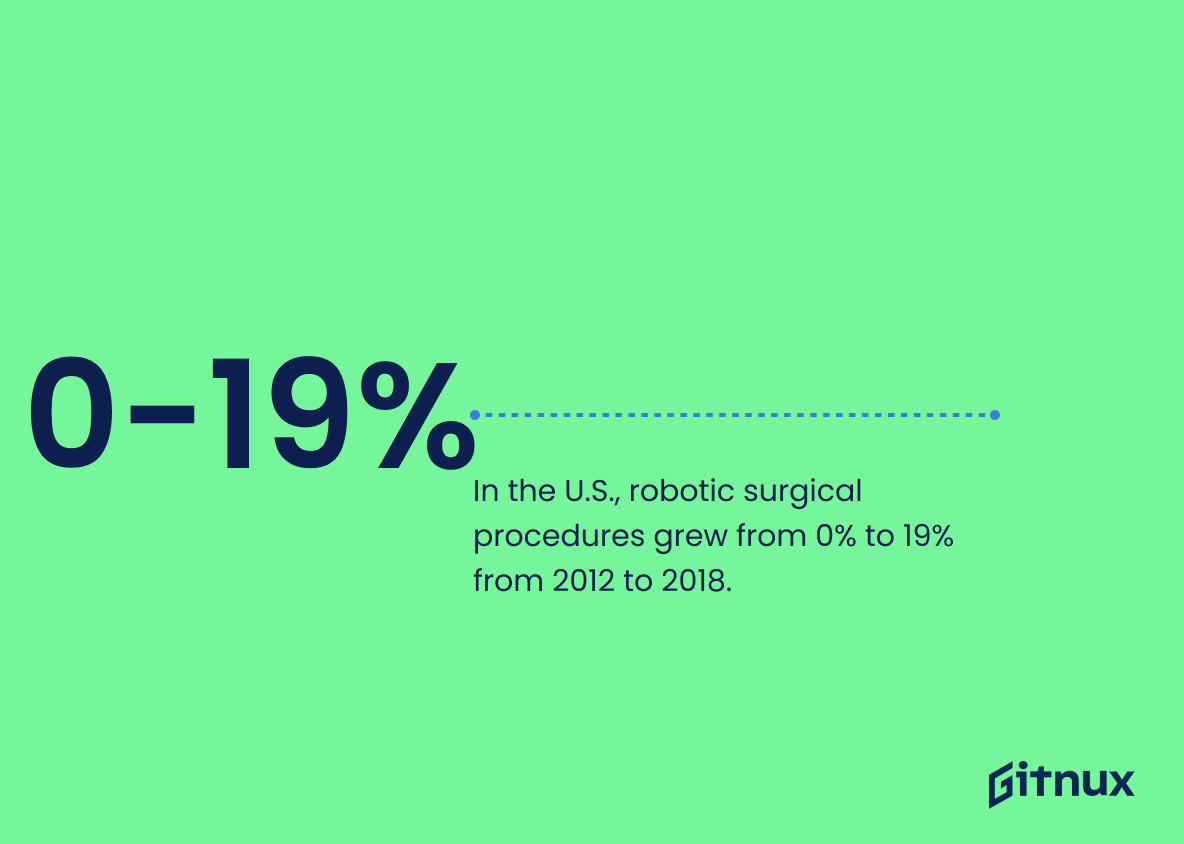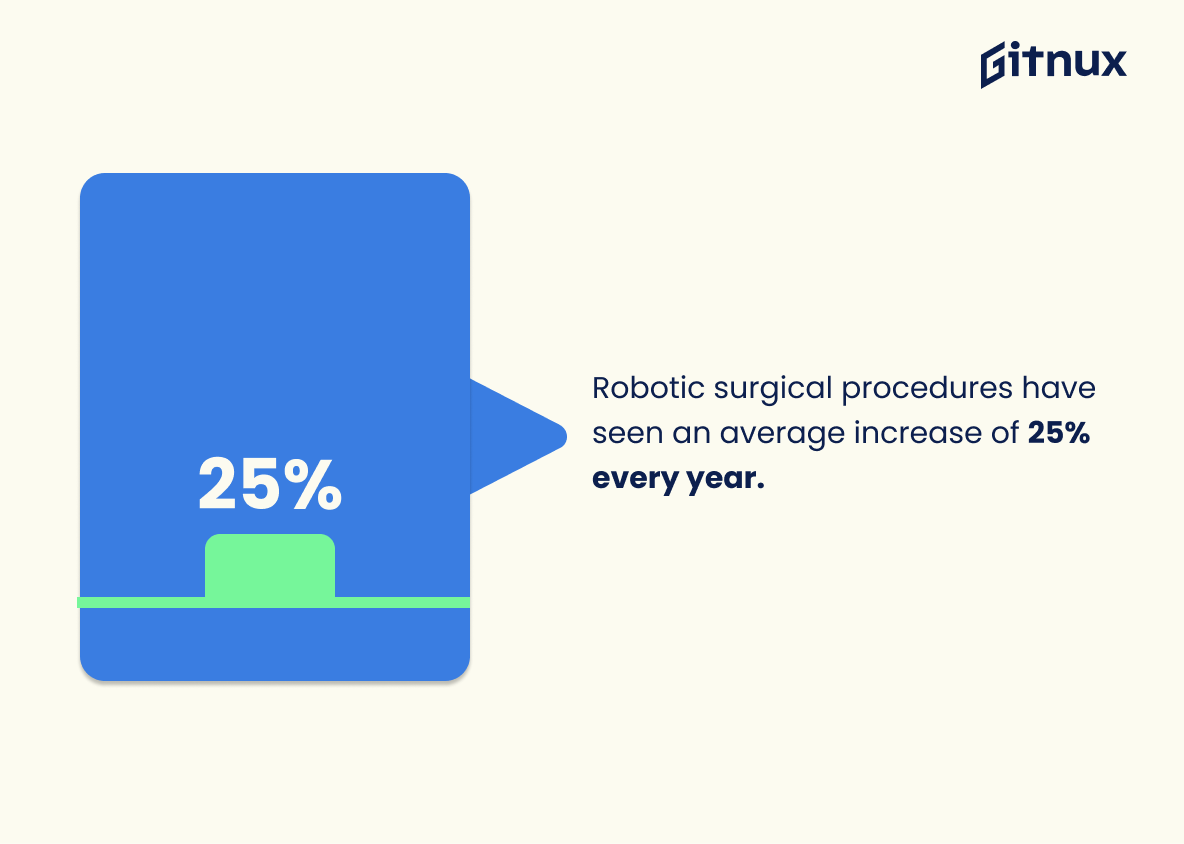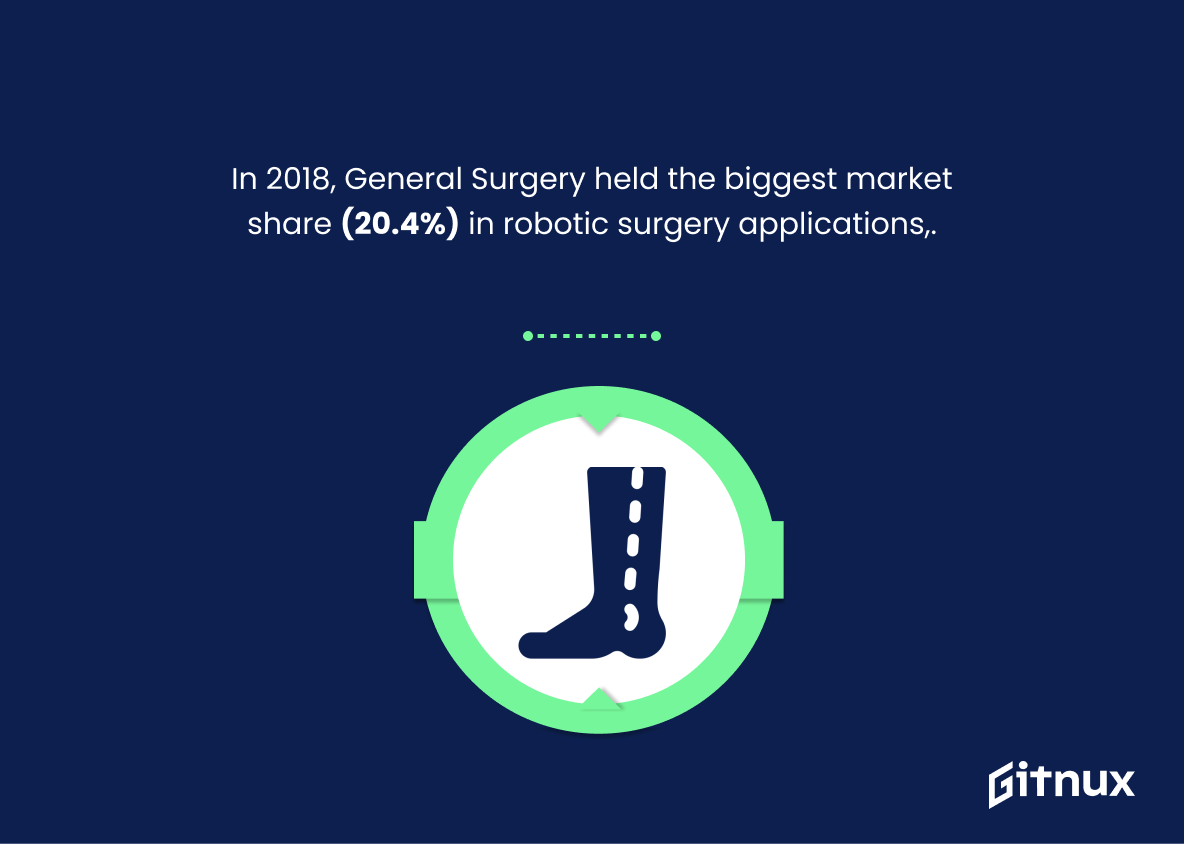Robotic surgery has become increasingly popular in recent years, and the statistics show that it is here to stay. In this blog post, we will take a look at the latest robotic surgery statistics and discuss the implications of this technology.
We will also explore the potential benefits and risks of robotic surgery, and discuss how it is being used in medical practice today. Finally, we will examine the future of robotic surgery and what it means for the medical industry.
Robotic Surgery: The Most Important Statistics
The percentage of surgical procedures performed by robotic technology in the United States increased from 0% to 19% from 2012 to 2018.
Robotic surgery is most commonly used for thyroid and prostate cancer surgeries, accounting for 38% and 27.8% of procedures, respectively.
Robotic Surgery Statistics Overview
Robotic surgery technology is projected to shift from semi-autonomous to autonomous robots, increasing the market share of autonomous robots from 43.8% to 46.9% by 2029.
This shift indicates that autonomous robots are becoming more reliable and efficient, allowing for a greater number of robotic surgeries to be performed with greater accuracy.
The market size of surgical robotics is projected to increase from 69.6 billion USD in 2022 to 119.7 billion USD in 2030.
The increase in market size is indicative of the increasing demand for robotic surgery and the potential for further growth in the future.
Increase of Robotic surgical procedures in Numbers
The percentage of surgical procedures performed by robotic technology in the United States increased from 0% to 19% from 2012 to 2018.
Robotic surgery is becoming more accepted and is becoming a viable option for many medical procedures. This trend also suggests that robotic surgery is becoming more efficient and cost-effective, which could lead to more widespread adoption in the future.
Robotic surgical procedures have seen an average increase of 25% every year.
Therefore, robotic surgery is becoming a more viable option for many medical procedures.
Common Use of Robotic Surgeries
Robotic Surgery in General Surgery applications had the largest market share (20.4%) in 2018, followed by Orthopaedic Surgery and Gynecology.
Furthermore, robotic surgery is increasingly being used for paedriatic patients, with urological procedures being the most common (51%), followed by gynecological procedures (22%) and oncological surgeries (12%).
Robotic surgery is most commonly used for thyroid and prostate cancer surgeries, accounting for 38% and 27.8% of procedures, respectively.
This shows that robotic surgery is an effective and safe method for treating thyroid and prostate cancer, and is becoming increasingly popular among surgeons.
In 2016, prostatectomies were the most commonly performed robotic surgery procedure in the US, followed by hysterectomies and hernia repairs.
Risks of Robotic Surgeries
Robotic surgery has a higher risk of leaving behind cancerigenous tissue than traditional surgery, which is a disadvantage in clinical aspects.
It is therefore important to be aware of the potential risks associated with robotic surgery in order to make informed decisions about which type of surgery is best for a given situation.
Knowing the potential risks can help healthcare providers and patients make the best decisions for their individual needs.
Conclusion
Robotic surgery is a rapidly growing field of medicine that has the potential to revolutionize the way we perform surgery. The statistics show that robotic surgery is becoming increasingly popular, with the number of procedures performed each year increasing exponentially.
The safety and accuracy of robotic surgery is also improving, with fewer complications and better outcomes than traditional surgery. As technology continues to improve, robotic surgery will become even more commonplace in the medical field. With its many advantages, robotic surgery is sure to become a mainstay in the medical world.
References
1 – https://www.statista.com/statistics/1132562/roboticare-market-share-worldwide-by-technology/
2 – https://www.statista.com/statistics/1258220/worldwide-surgical-robotics-market-size/
3 – https://pubmed.ncbi.nlm.nih.gov/31922557/
4 – https://healthresearchfunding.org/14-important-robotic-surgery-statistics/
5 – https://www.medgadget.com/2019/10/surgical-robots-market-2019-size-share-growth-top-key-players-update-business-statistics-and-research-methodology-2026.html
6 – https://www.researchgate.net/publication/336727738_Robotic_surgery_in_paediatric_patients_Our_initial_experience_and_roadmap_for_successful_implementation_of_robotic_surgery_programme
7 – https://sev.severance.healthcare/sev-en/patients/robotic.do
8 – https://www.meddeviceonline.com/doc/considerations-for-conquering-the-u-s-robotic-surgery-market-0001
9 – https://healthresearchfunding.org/14-important-robotic-surgery-statistics/








